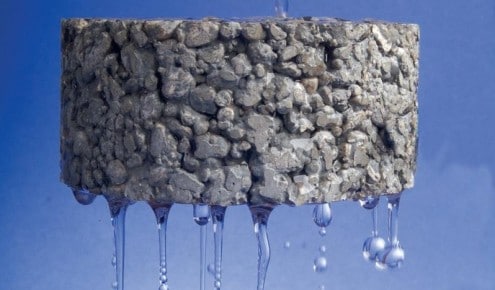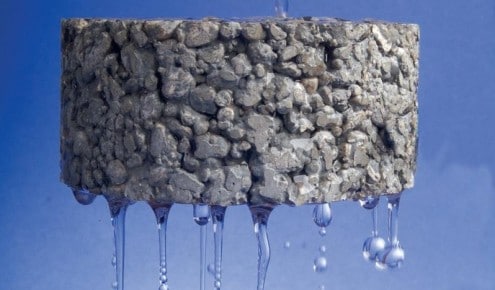Thin concrete is a type of concrete used primarily for drainage purposes and as a structural fill material. It guarantees better water drainage through the filling material and provides the necessary resistance.
Thin concrete is a very old technology used in construction. Especially when building retaining walls.
This concrete prevents water pressure from building up behind the wall. Furthermore, it is light and stable.
Furthermore, it is much more effective than other types of drainage such as perforated pipes, etc.
What is fine concrete?
It is concrete made from coarse aggregates and cement. No fines are used in the mixture.
Additionally, uniform aggregates are used to improve the performance of the concrete mix after placement. When graded aggregates are used, the voids are filled. However, a uniform size creates more voids in the concrete.
Mix designs for non-fine concrete are determined based on the required strength of the concrete as we may need higher strengths in some places to be able to withstand the loads.
For example, if we are concreting a path used by vehicles, the thin concrete must be able to support the load of the vehicles.


This can be viewed as modified structural fill. This is very popular in segmented construction as filling can be done in stages. Furthermore, it reduces the development of irrigation water pressure on the segment retaining wall.
Reducing water pressure due to proper drainage saves significant costs by significantly reducing the design pressure on the support structure.
Furthermore, it is more effective than other water drainage methods such as buried pipes, etc.
Let's highlight the main advantages of using thin concrete
Advantages of thin concrete
- One of the most effective drainage methods
- They are generally used in hydraulic structures and for underground drainage without affecting above-ground functions.
- Can be used as a gravity structure
- The low density of concrete
- Low cost due to low cement content and the fact that it is not necessary to use ready-made aggregates
- Due to the cavities in the concrete, thermal conductivity is low.
- It has an insulating effect, as it dissipates less heat due to the large proportion of pores. Useful in the construction of exterior walls.
- The lower weight compared to normal concrete saves construction costs.
- Concrete segregation is minimal
- Lower drying shrinkage compared to normal concrete
- No mechanical vibration is required to compact the concrete. The rodding method may be sufficient.
Disadvantages of thin concrete
- Due to the high void formation, the strength of fine concrete is lower than other types of concrete
- Due to its lack of resistance and the corrosion of reinforcement exposed to the environment, it cannot be used as reinforced concrete.
- The consistency of concrete cannot be measured.
- Production in small quantities is a little difficult.
- Pouring a concrete wall next to a concrete wall without thin concrete is much more difficult because soil can get into the voids in the concrete. Pouring non-thin concrete next to an already concreted concrete wall is much easier.
Related articles
- Early thermal cracking (calculate R/F requirements)
- Influence of construction practices on the formation of cracks
- Formation of cracks in concrete (basics, types and causes)
- Physical reasons for cracks
- Basics of crack formation in immature concrete
- Types of Foundation Cracks, Why They Are Serious
- Basement Wall Cracks (A Detailed Study)
- What is concrete spalling – causes and repairs
- 20 factors that affect the durability of concrete
- Durability of concrete (requirements and problems)
- Concrete shaking (methods and correct procedure)
- 6 Factors That Affect Concrete Curing Time
- 11 Methods for Hardening Concrete
- A detailed study of concrete (from scratch)
- Types of concrete shrinkage (detailed study)

